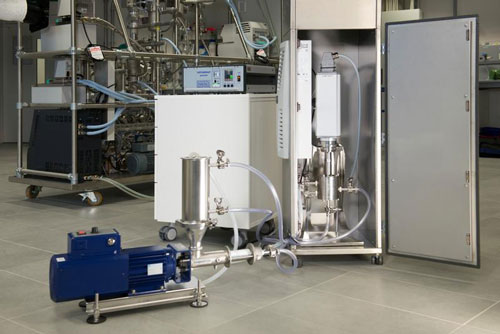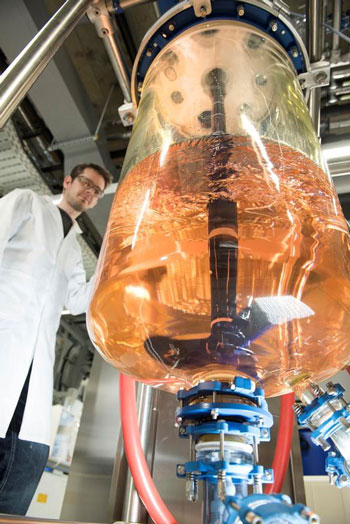| Posted: May 10, 2016 |
Open access infrastructure for a pilot line of nanoparticles and nanocomposites
(Nanowerk News) “What opportunities does the nanotechnology provide in general, provide nanoparticles for my products and processes?” So far, this question cannot be answered easily. Preparation and modification of nanoparticles and the further processing require special technical infrastructure and complex knowledge. For small and medium businesses the construction of this infrastructure “just on luck” is often not worth it. Even large companies shy away from the risks. As a result many good ideas just stay in the drawer.
|
|
A simple and open access to high-class infrastructure for the reliable production of small batches of functionalized nanoparticles and nanocomposites for testing could ease the way towards new nano-based products for chemical and pharmaceutical companies. The European Union has allocated funds for the construction of a number of pilot lines and open-access infrastructure within the framework of the EU project CoPilot.
|
 |
| Molecular vaporizer for laboratory and pilot plant scale to separate and recover high boiling solvents in high vacuum atmosphere. (Image: K. Dobberke for Fraunhofer ISC)
|
|
A consortium of 13 partners from research and industry, including nanotechnology specialist TNO from the Netherlands and the Fraunhofer Institute for Silicate Research ISC from Wuerzburg, Germany as well as seven nanomaterial manufacturers, is currently setting up the pilot line in Wuerzburg. First, they establish the particle production, modification and compounding on pilot scale based on four different model systems. The approach enables maximum variability and flexibility for the pilot production of various particle systems and composites. Two further open access lines will be established at TNO in Eindhoven and at the Sueddeutsche Kunststoffzentrum SKZ in Selb.
|
|
The “nanoparticle kitchen”
|
|
Essential elements of the pilot line in Wuerzburg are the particle synthesis in batches up to 100 liters, modification and separation methods such as semi-continuous operating centrifuge and in-line analysis and techniques for the uniform and agglomeration free incorporation of nanoparticles into composites. Dr. Karl Mandel, head of Particle Technology of Fraunhofer ISC, compares the pilot line with a high-tech kitchen: “We provide the top-notch equipment and the star chefs to synthesize a nano menu à la carte as well as nanoparticles according to individual requests. Thus, companies can test their own receipts – or our existing receipts – before they practice their own cooking or set up their nano kitchen.”
|
 |
| Stirring reactor (100 liter) for upscaling of laboratory syntheses, equipped with in-situ analysis for particle size measurement to monitor and control processes. (Image: K. Dobberke for Fraunhofer ISC)
|
|
In the future, the EU project offers companies a contact point if they want to try their nano idea and require enough material for sampling and estimation of future production costs. This can, on the one hand, minimize the development risk, on the other hand, it maximizes the flexibility and production safety. To give lots of companies the opportunity to influence direction and structure/formation/setup of the nanoparticle kitchen, the project partners will offer open meetings on a regular basis.
|
|
The next workshop in this context takes place at Fraunhofer ISC in Wuerzburg, 7h July 2016. The partners present the pilot line and the first results of the four model systems – double layered hydroxide nanoparticle polymer composites for flame inhibiting fillers, titanium dioxide nanoparticles for high refractive index composites, magnetic particles for innovative catalysts and hollow silica composites for anti-glare coatings. Interested companies can find more information about the upcoming workshop on the website of the project www.h2020copilot.eu and on the website of Fraunhofer ISC www.isc.fraunhofer.de that hosts the event.
|


